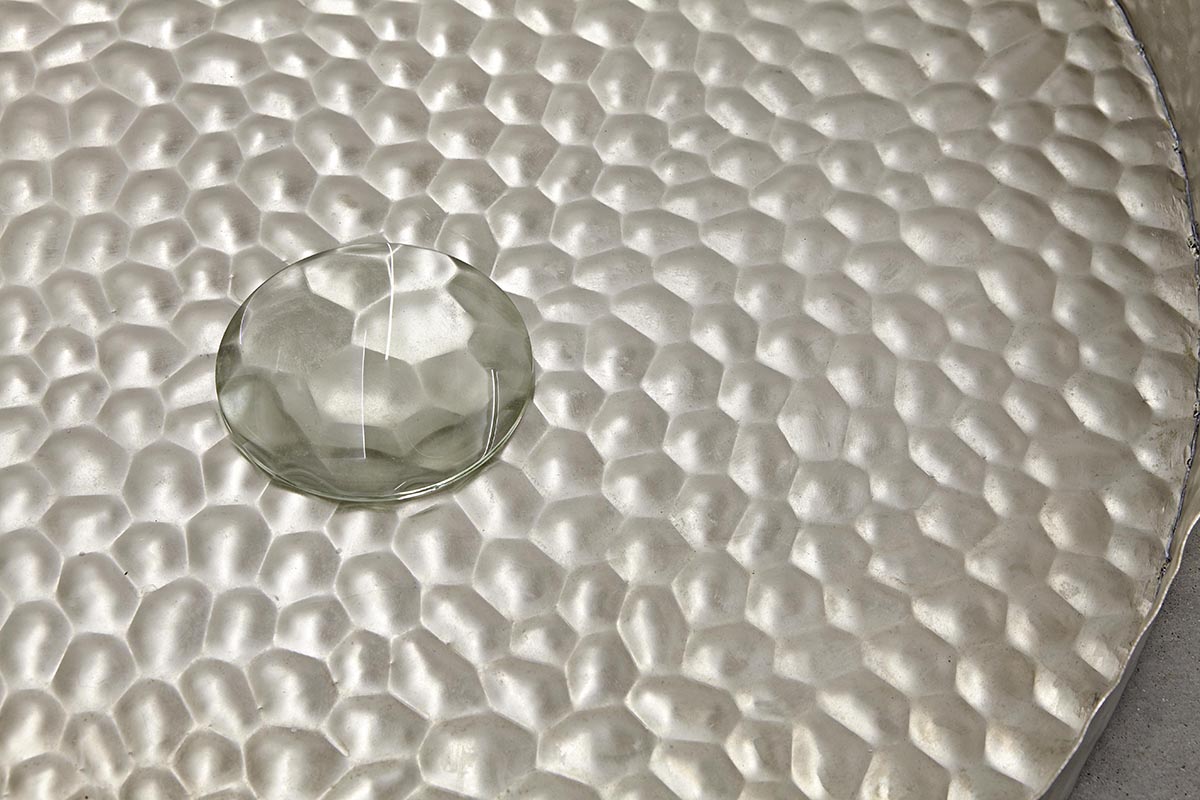Waterlily Jaguar
SpazioA gallery presents the third solo show in the gallery by Nona Inescu (1991, Bucharest, Romania), entitled Waterlily Jaguar. The exhibition consists of a recent body of work, produced during the year 2020 and it includes a series of steel sculptures, photographic works and a new short video.
Waterlily Jaguar is an exhibition that should be seen as a porous ecosystem, developed vertically between the water surface and the underwater. The artist examines closely the “event horizon” located on the cusp of these two spaces and its main inhabitants, namely a spectrum of hydrophytes (aquatic plants) by emphasizing their hybrid nature and the resulting iconographic associations.
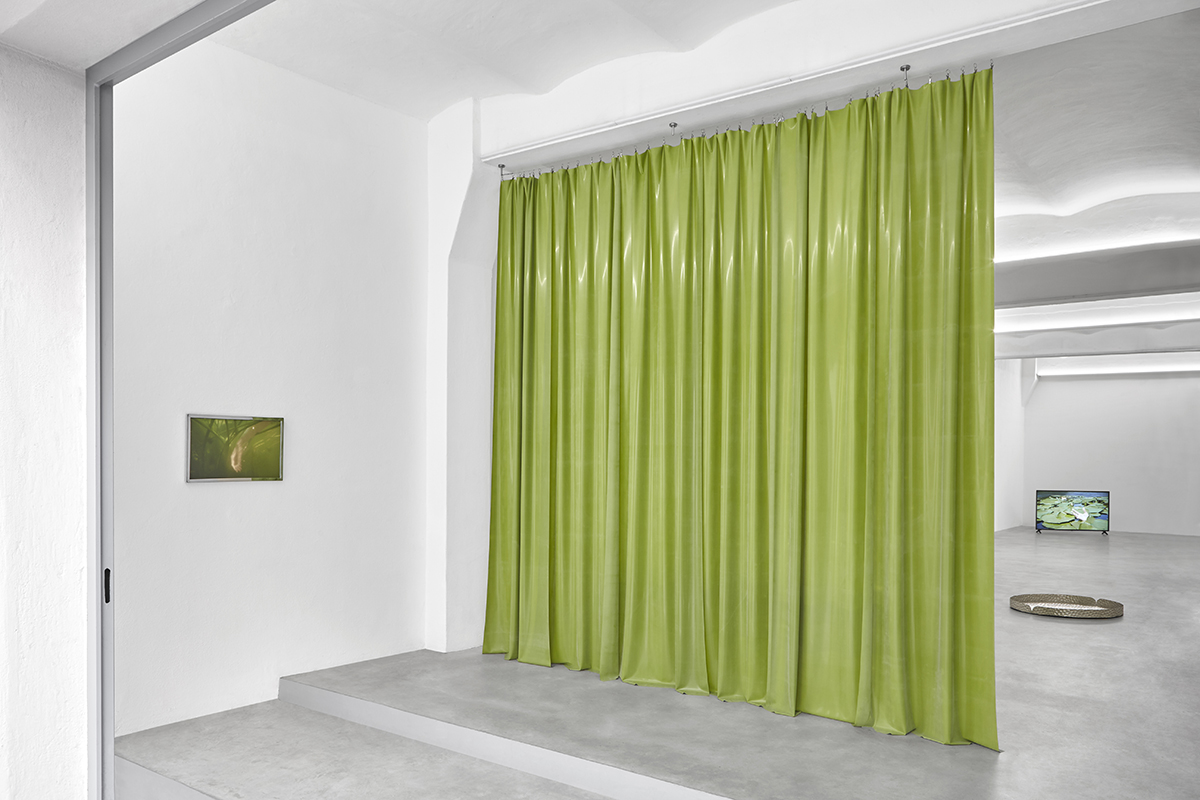
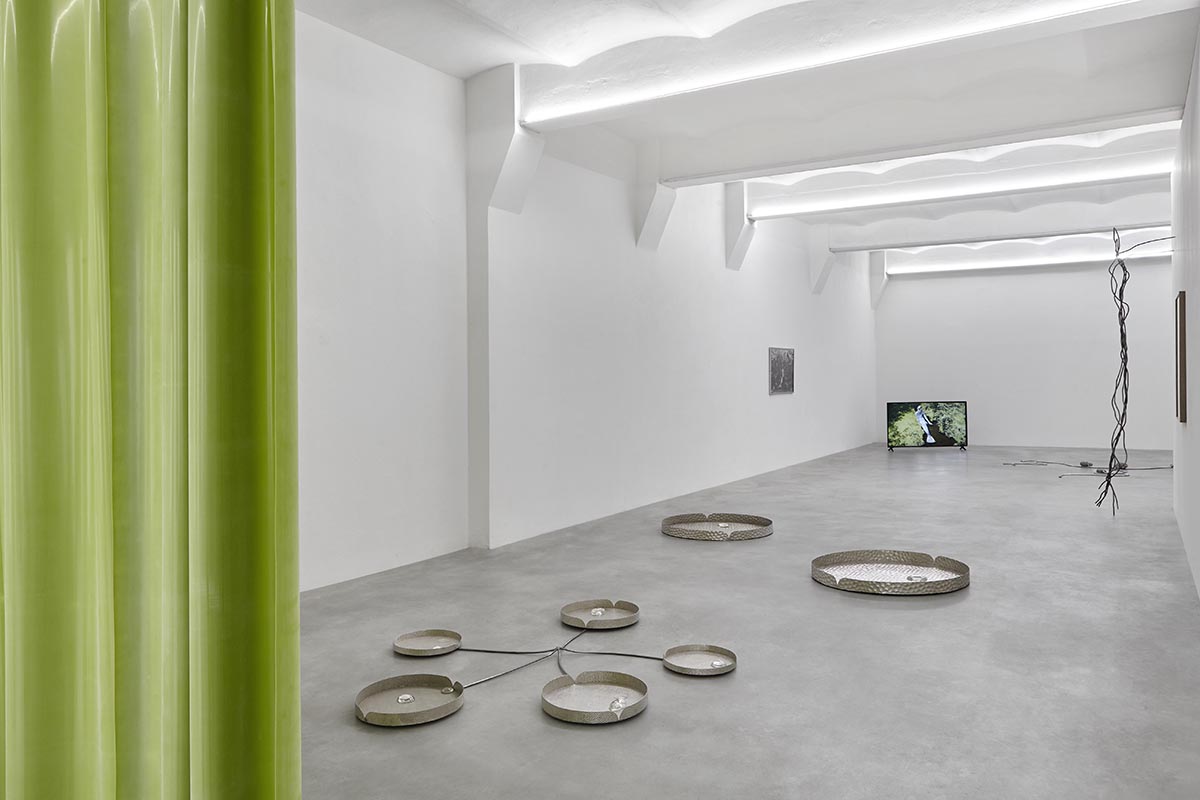
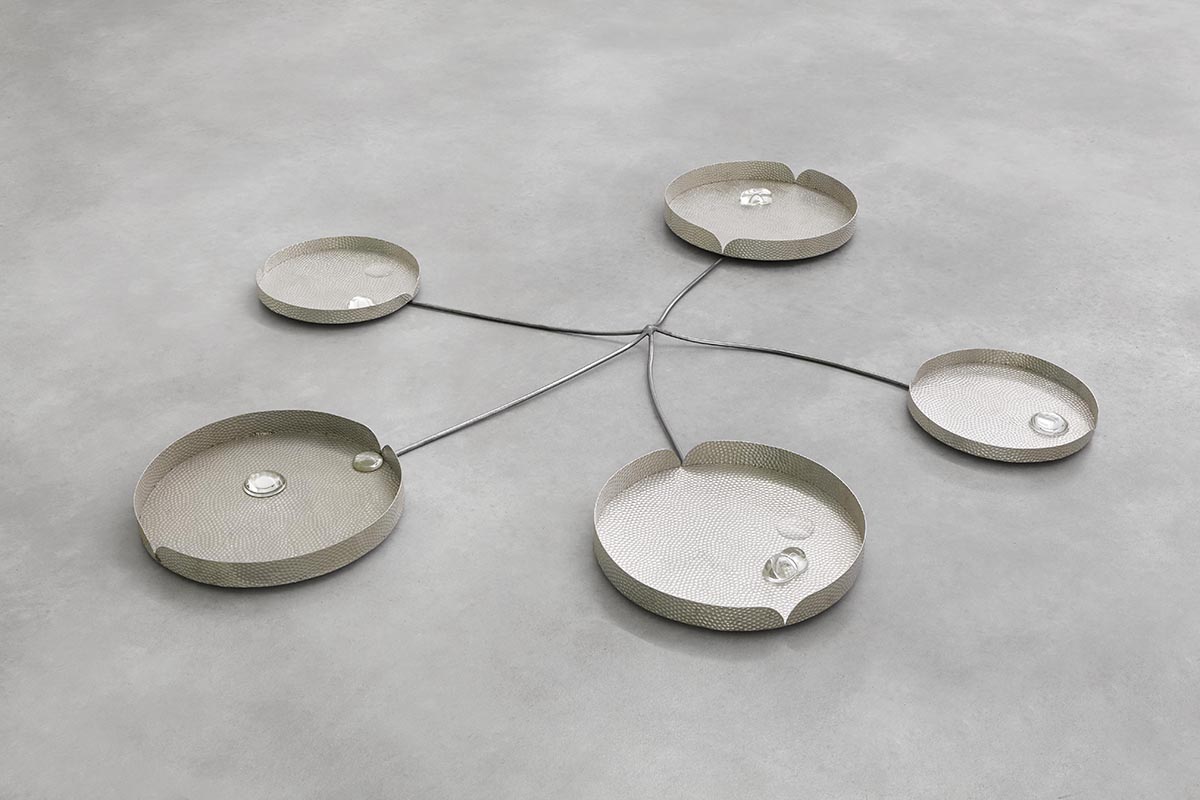
Nona Inescu, Waterlily Jaguar, 2021. Exhibition view, SpazioA, Pistoia.
Nona Inescu, A float (Petioles), 2021, Chrome-plated pressed steel, glass lens, cm 7 x 170 x 200.
Courtesy SpazioA, Pistoia. Photo by Camilla Maria Santini
Waterlilies are hydrophytes that grow in clusters and hormonally communicate together within their community. They can self-reproduce and have mobility across the water surface, being both earthed and waterborne. The waterlily’s roots settle in the silt below the water but its leaves and flowers are mobile, floating across the reflective watery surface. Water lilies communicate chemically with each other so that they can better flourish, signaling to each other if there are adverse conditions or imminent threat.1
Since the times of Carl Linnaeus, an eighteenth century nature classifier, plants are generally considered to be less relevant than the human species, based on the lack of mobility and sentience. The actual capacities of water lilies are further evidence that plants require critical and cultural examination, as companion species, and that plants require an accompanying shift in human perception of their vegetal status.2
Throughout history, plants from the Nymphaeaceae family were often anthropomorphized and their beauty and fluid nature found a correspondence in ancient myths and folklore. Hybrid characters, such as Sirens, Nymphs, Naiads and Nixe are shapeshifting water spirits, floating between two worlds. The water lily was portrayed especially often in the art of the Classic Mayan period in iconographic contexts that can be interpreted in a variety of ways.
There are essentially three motifs: water lilies sprouting from the backs of crocodiles swimming in the water; the head of the “earth monster,” around which water lilies are entwined; jaguars that are either wearing the stalks and buds of water lilies as a head ornament or dancing with water lilies. The association between the jaguar and the water lily is especially dominant. The Water lily Jaguar god is seen, among different theories, as a god of protection, fertility, royalty, as well as a god of plants.
“The impression the plant gave me, when viewed from the bank above, was that of a number of green tea trays floating, with here and there a bouquet protruding between them; but when more closely surveyed the leaves excited the utmost admiration, from their immensity and perfect symmetry. A leaf, turned up, suggests some strange fabric of cast iron just taken from the furnace, its ruddy color, and the enormous ribs with which it is strengthened, increasing the similarity.”
(Richard Spruce)
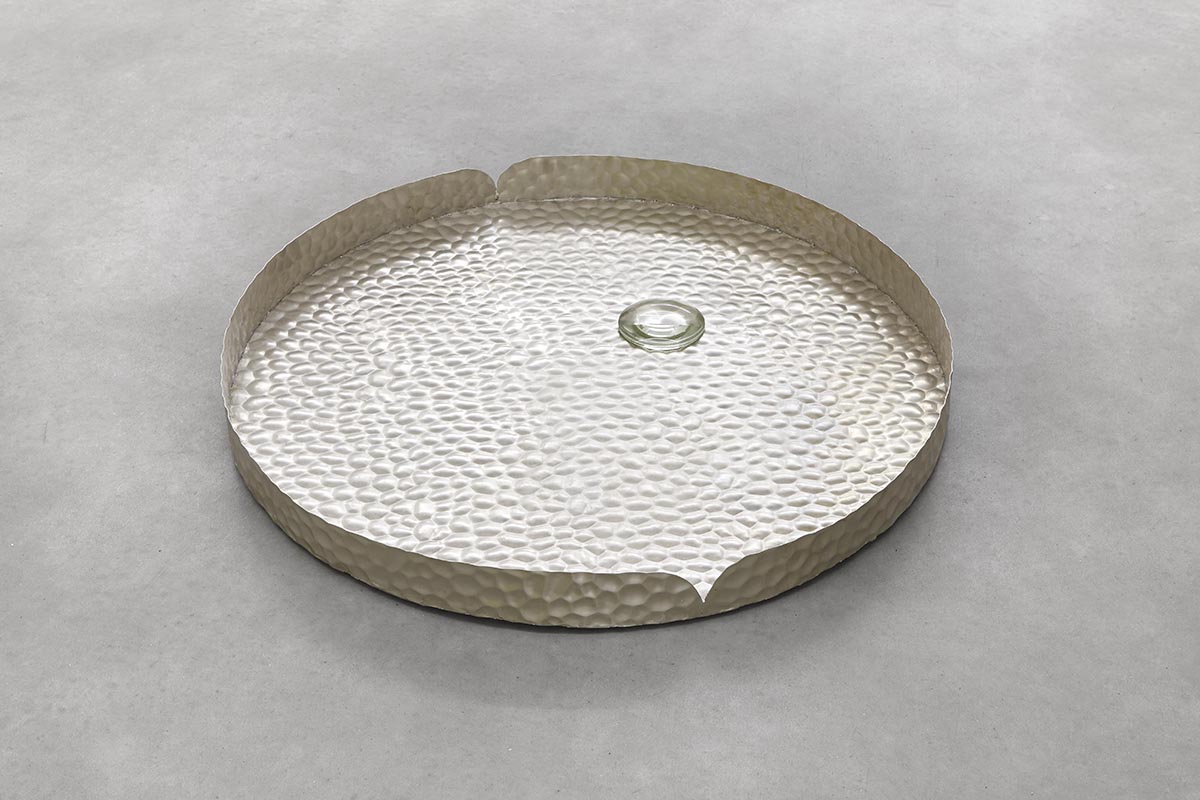
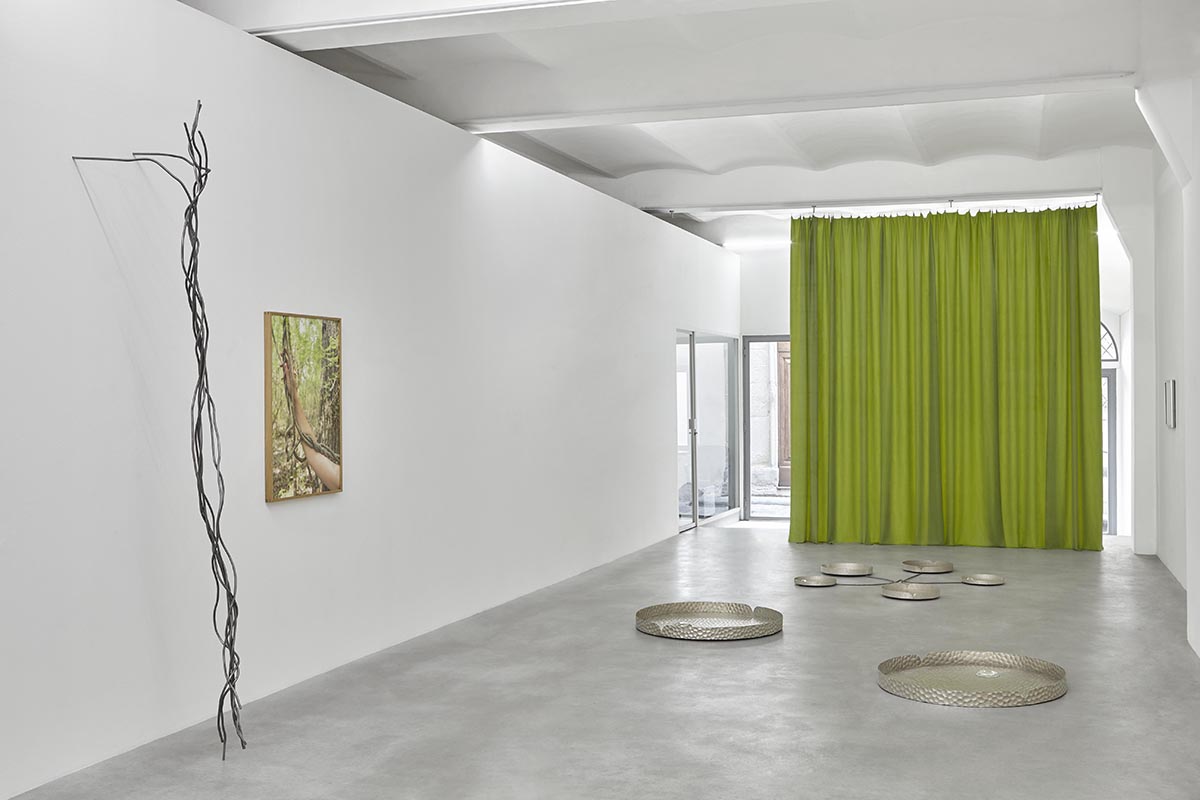

Nona Inescu, A float (Victoria amazonica) #1, 2021, chrome-plated pressed steel, glass lens, cm Ø 100 x 15
Nona Inescu, Waterlily Jaguar, 2021. Exhibition view, SpazioA, Pistoia.
Nona Inescu, Numphea ampla (white waterlily), 2021, archival print on Hahnemuehle Rag Satin paper, artist frame (chrome-plated steel), cm 40 x 60
Courtesy SpazioA, Pistoia. Photo by Camilla Maria Santini
Upon entry in the gallery, the viewer is already confronted with a separation of the two spaces, encountering a single photograph which introduces the underwater gardens and a green latex curtain, signaling both a liquid boundary and the vegetal water depths.
Behind the curtain, a sensing ground for all that lies above the surface is revealed through a series of steel sculptures, embodying giant Victoria Amazonica lily pads, as well as a steel liana extending from the gallery floor, both species of plants found in the tropical ecosystems of the Amazon. The works in the exhibition are all converging towards the short video (a new collaboration between Nona Inescu and the sound artist Simina Oprescu), which further explores the depths of underwater gardens, soft flora and their mythical counterparts.
It is said that Sir Joseph Paxton, a nineteenth century architect and gardener, drew inspiration from the leaf of Victoria Amazonica water lily for the construction of the Crystal Palace. Designed for the Great Exhibition of 1851, The Crystal Palace was a large glass and iron structure built in London, England.
The method of construction was a breakthrough in technology and design, and paved the way for more sophisticated prefabricated design in the twentieth century, as well as one of the first examples of biomimetic design. Thus, the materials chosen for the sculptures in the exhibition Waterlily Jaguar should be seen as a tribute to this moment in history and to the importance of these aquatic plants in architecture and culture at large. In this capacity we would show allegiance to the dirt and stones, the rivers and forests, and consider all plant species with respect rather than via a removed, critically subjective eye. This kind of commitment would comprise an honorable agreement, a pact of loyalty, a contract with the plant world, one person at a time.3
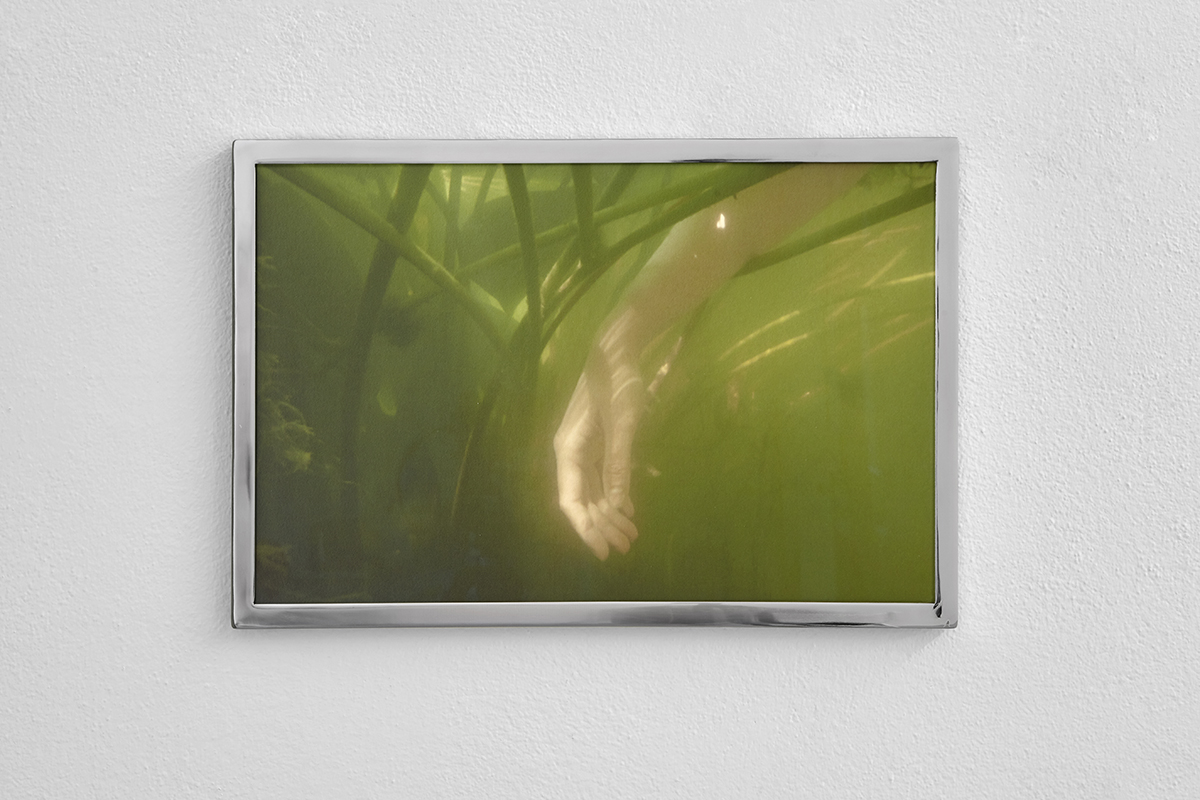
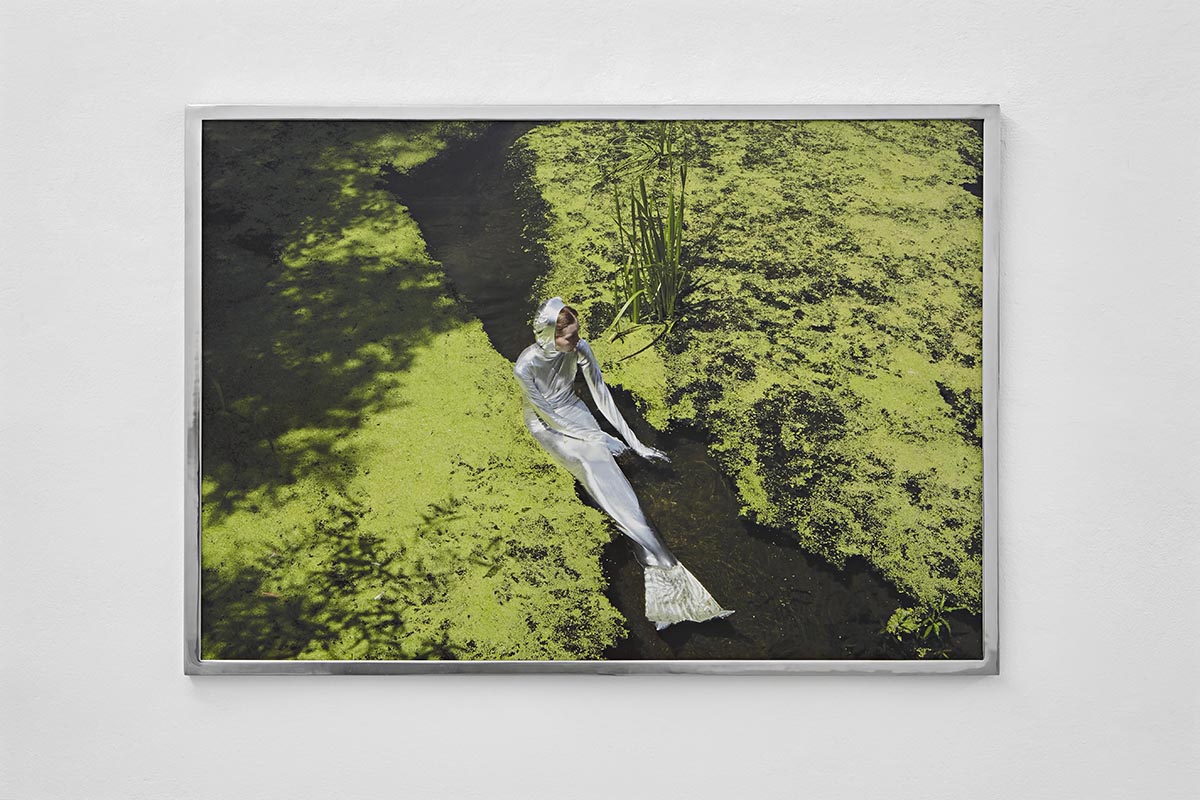
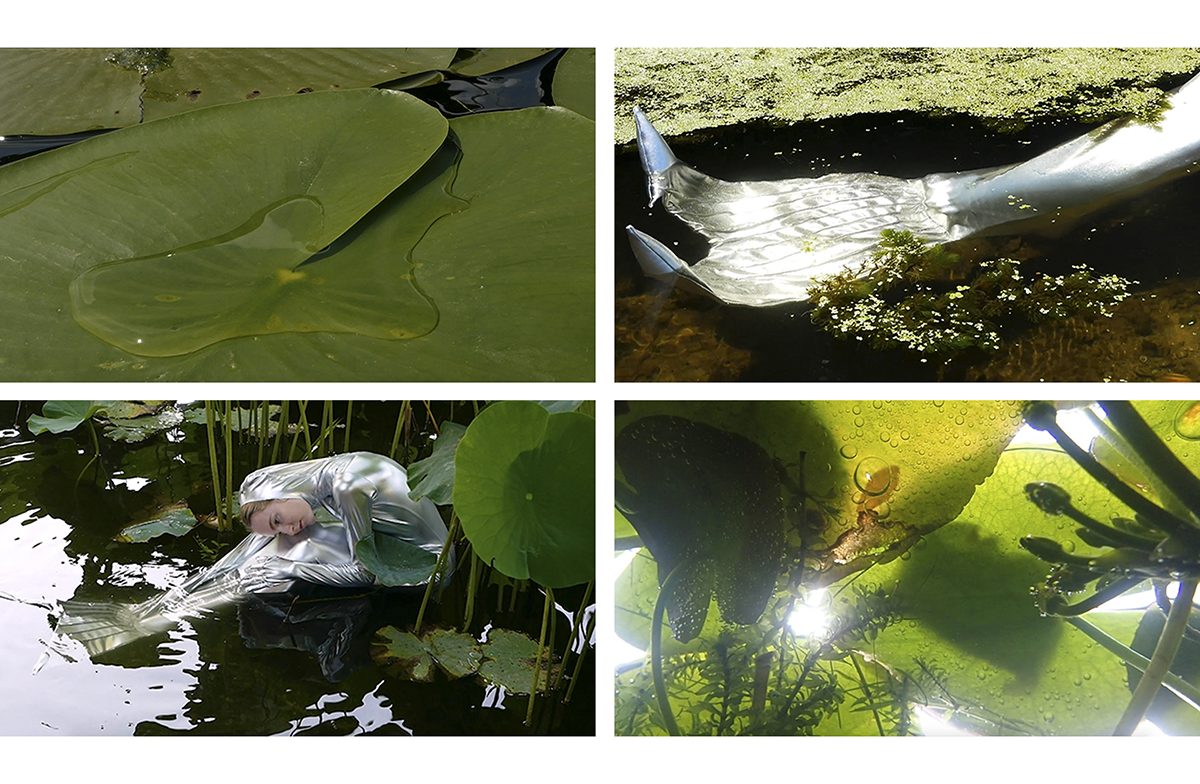
Nona Inescu, Nixe, 2021, archival print on Hahnemuehle Rag Satin paper, artist frame (chrome- plated steel), cm 40 x 60
Nona Inescu, Nymph (Lemna minor), 2021, archival print on Hahnemuehle Rag Satin paper, artist frame (chrome- plated steel), cm 70 x 100
Nona Inescu, Hydrophites, 2021, Nona Inescu in collaboration with Simina Oprescu, single channel HD video, sound, 15' 43”, video stills
Courtesy SpazioA, Pistoia
Photo by Camilla Maria Santini
- The Feminist Plant: Changing Relations with the Water Lily, Prudence Gibson, Monica Gagliano, 2017
- The Philosopher’s Plant, Michael Marder, 2014
- The Feminist Plant: Changing Relations with the Water Lily, Prudence Gibson, Monica Gagliano, 2017

